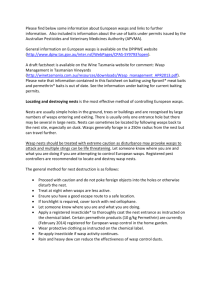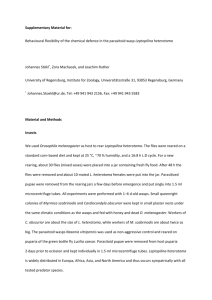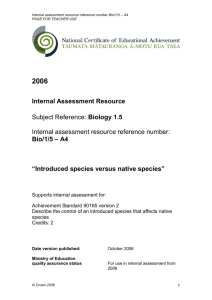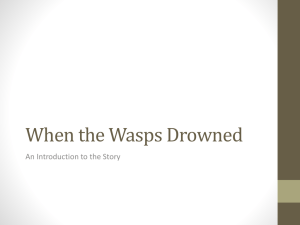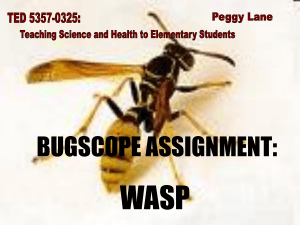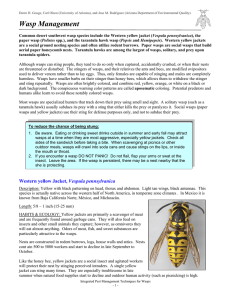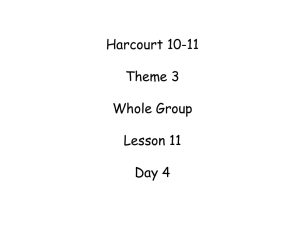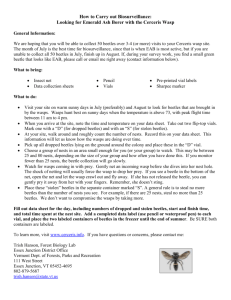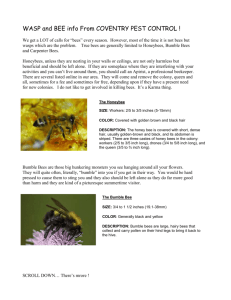how to make a homemade paper wasp trap
advertisement
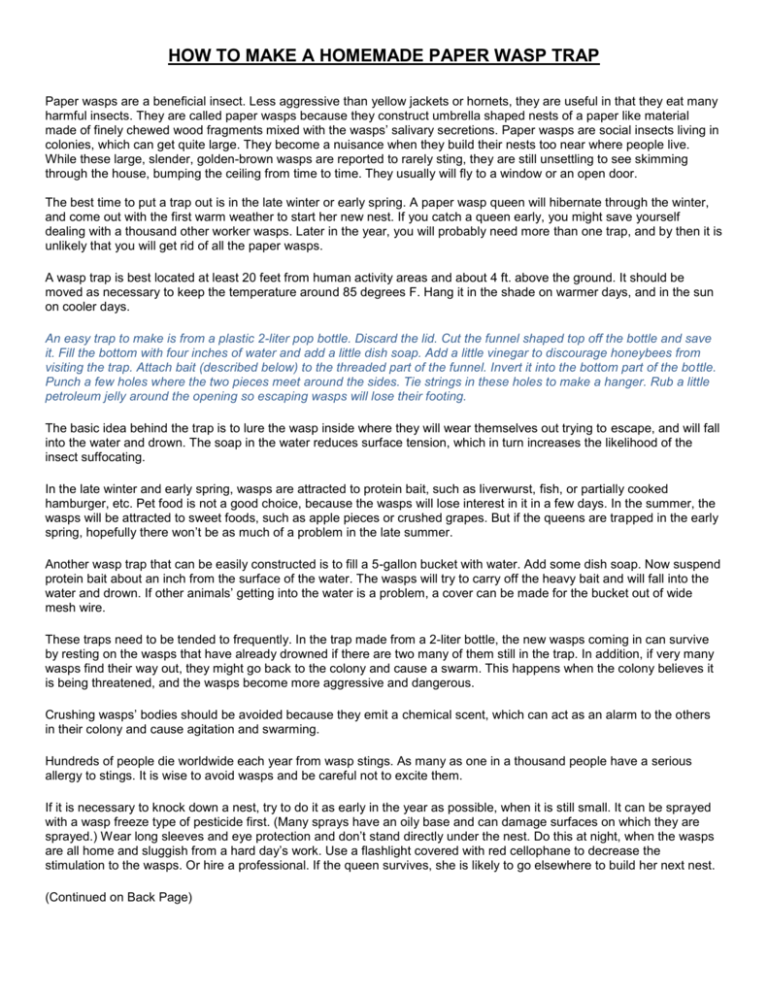
HOW TO MAKE A HOMEMADE PAPER WASP TRAP Paper wasps are a beneficial insect. Less aggressive than yellow jackets or hornets, they are useful in that they eat many harmful insects. They are called paper wasps because they construct umbrella shaped nests of a paper like material made of finely chewed wood fragments mixed with the wasps’ salivary secretions. Paper wasps are social insects living in colonies, which can get quite large. They become a nuisance when they build their nests too near where people live. While these large, slender, golden-brown wasps are reported to rarely sting, they are still unsettling to see skimming through the house, bumping the ceiling from time to time. They usually will fly to a window or an open door. The best time to put a trap out is in the late winter or early spring. A paper wasp queen will hibernate through the winter, and come out with the first warm weather to start her new nest. If you catch a queen early, you might save yourself dealing with a thousand other worker wasps. Later in the year, you will probably need more than one trap, and by then it is unlikely that you will get rid of all the paper wasps. A wasp trap is best located at least 20 feet from human activity areas and about 4 ft. above the ground. It should be moved as necessary to keep the temperature around 85 degrees F. Hang it in the shade on warmer days, and in the sun on cooler days. An easy trap to make is from a plastic 2-liter pop bottle. Discard the lid. Cut the funnel shaped top off the bottle and save it. Fill the bottom with four inches of water and add a little dish soap. Add a little vinegar to discourage honeybees from visiting the trap. Attach bait (described below) to the threaded part of the funnel. Invert it into the bottom part of the bottle. Punch a few holes where the two pieces meet around the sides. Tie strings in these holes to make a hanger. Rub a little petroleum jelly around the opening so escaping wasps will lose their footing. The basic idea behind the trap is to lure the wasp inside where they will wear themselves out trying to escape, and will fall into the water and drown. The soap in the water reduces surface tension, which in turn increases the likelihood of the insect suffocating. In the late winter and early spring, wasps are attracted to protein bait, such as liverwurst, fish, or partially cooked hamburger, etc. Pet food is not a good choice, because the wasps will lose interest in it in a few days. In the summer, the wasps will be attracted to sweet foods, such as apple pieces or crushed grapes. But if the queens are trapped in the early spring, hopefully there won’t be as much of a problem in the late summer. Another wasp trap that can be easily constructed is to fill a 5-gallon bucket with water. Add some dish soap. Now suspend protein bait about an inch from the surface of the water. The wasps will try to carry off the heavy bait and will fall into the water and drown. If other animals’ getting into the water is a problem, a cover can be made for the bucket out of wide mesh wire. These traps need to be tended to frequently. In the trap made from a 2-liter bottle, the new wasps coming in can survive by resting on the wasps that have already drowned if there are two many of them still in the trap. In addition, if very many wasps find their way out, they might go back to the colony and cause a swarm. This happens when the colony believes it is being threatened, and the wasps become more aggressive and dangerous. Crushing wasps’ bodies should be avoided because they emit a chemical scent, which can act as an alarm to the others in their colony and cause agitation and swarming. Hundreds of people die worldwide each year from wasp stings. As many as one in a thousand people have a serious allergy to stings. It is wise to avoid wasps and be careful not to excite them. If it is necessary to knock down a nest, try to do it as early in the year as possible, when it is still small. It can be sprayed with a wasp freeze type of pesticide first. (Many sprays have an oily base and can damage surfaces on which they are sprayed.) Wear long sleeves and eye protection and don’t stand directly under the nest. Do this at night, when the wasps are all home and sluggish from a hard day’s work. Use a flashlight covered with red cellophane to decrease the stimulation to the wasps. Or hire a professional. If the queen survives, she is likely to go elsewhere to build her next nest. (Continued on Back Page) In the event of a sting, carefully wash the sting site with cool water. Vinegar is reported to ease the pain of a sting. Then apply antihistamine cream. If antihistamine cream is unavailable, use a little meat tenderizer or baking soda mixed with a little water. This will draw the poison out and help remove the stinger. Be aware that a wasp can sting more than once. In fact, a dead wasp on the ground can inject its stinger into a nearby bare foot! If the patient is known to be allergic to stings, or if they begin to feel sleepy, get medical help immediately. When possible, it is good to leave wasps alone, since they provide a valuable service. When they get too close to the home, though, they cause trouble. A thoughtfully placed trap can help remove them. (Source) - Essortment – www.essortment.com/home/homemadepaperw_sety.htm
